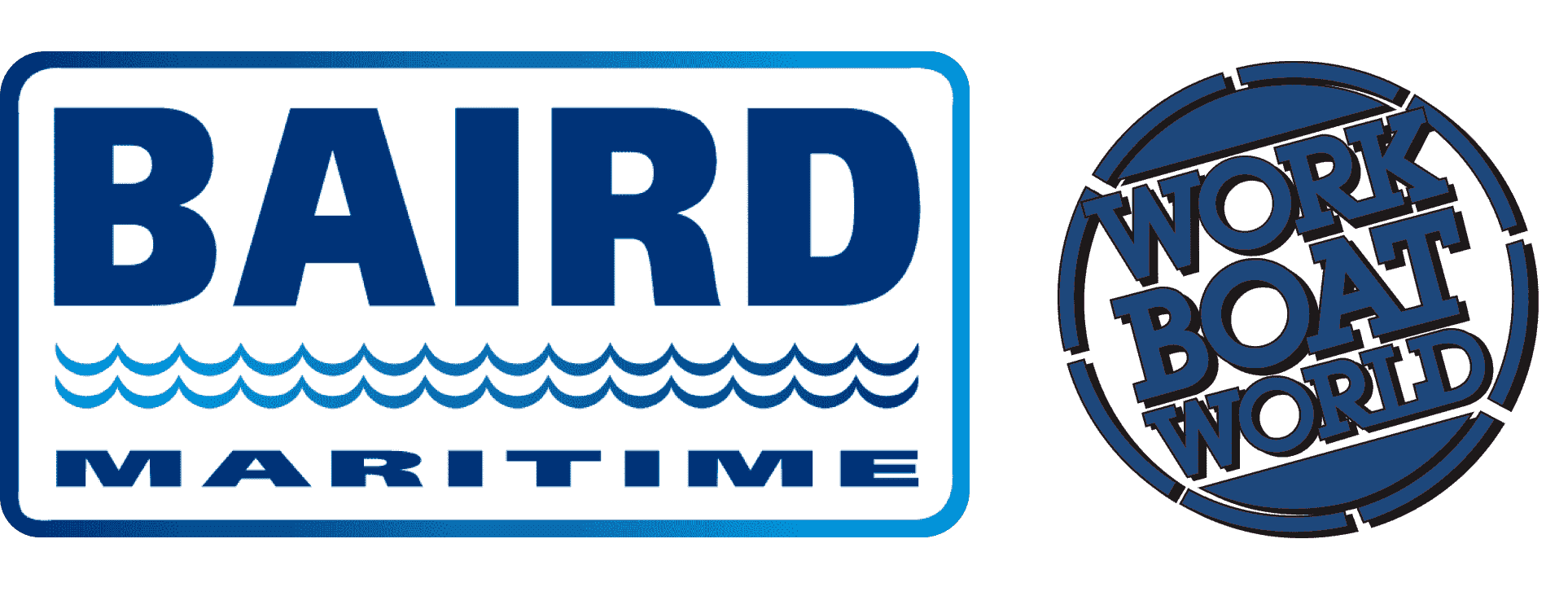AWARDS 2022 | Best Compact Tug – Hercules & Samson – Ad Hoc Marine Designs
A fascinating new take on tug design. Catamaran tugs are very rare, but these versatile small units are ideal for the job they were designed to do. They are very manoeuvrable and are ideally suited for operations in small, tight harbours.
"The main issue with small tugs is their stability when under tow," Ad Hoc Marine Designs' John Kecsmar told Baird Maritime. "During a towing operation the rope can swing from astern to the side very quickly and this can compromise the stability of the tug.
"These tugs are multihulls, rather than conventional monohulls. As such, this multihull design of tug offers 50 per cent improved stability compared to an equivalent sized monohull."
The designer added that the other benefit of being a multihull is that the two engines are spaced farther apart and thus provide greater manoeuvrability. Also, on sea trials, the design demonstrated the ability to crash stop, which is important when or if things suddenly go wrong. The tugs of the class were able to go from full speed to a complete stop in one boat length.
"We have since also redesigned this range of tugs to be 100 per cent battery-powered, too. This taps into the need for zero emissions in and around ports and harbours."
Kecsmar said the main difficulty with the design is that it is very compact:
"The size of engine selected to provide the greater than five tonnes of bollard pull and the large slow turning diameter of the prop required a very compact hull form but with the ability to encourage a smooth flow of water into the prop. The change in shape of hull form, over such a short distance, coupled with the location of the major items of equipment, were very challenging to design. It was a case of going back to basics."
The designer added that the requirement of being lifted via a singular point, for stowing on a mothership, also posed a challenge when it came to matching the vessel's centre of gravity with its odd shape and its centre of buoyancy.
When asked about trends that currently impact naval architecture, Ad Hoc said renewable, sustainable and emission-free forms of energy have been garnering praise but without proper due diligence or reviews of the technology involved.
"Designs are being offered claiming to achieve emission-free and zero-carbon objectives," Kecsmar told Baird Maritime. "But when one looks at them objectively, it becomes evident that the system architecture behind these new forms of technology appear to be solutions looking for a problem.
"With the rising cost of hydrogen/H2 (significantly more than diesel) and the lack of immediately available green H2, etc, as one example, not to mention how the safety issues are being addressed, classification societies are having to provide almost reactive forms of rules, merely to satisfy the current fashionable form of energy."
Ad Hoc said that lessons should be learned from the automotive industry when it comes to attempting to introduce new forms of energy for providing propulsive power, as the notions of keeping everything simple and ensuring the safety of the vessel and its occupants are seemingly being ignored.
Ad Hoc was one of the companies to benefit from the positive effects of the weakening of Covid globally.
"Enquiries and new projects are beginning to take root again," Kecsmar told Baird Maritime. "We have been very busy with small, autonomous drone-type vessels, creating a whole new range of highly stable craft. These designs open up new possibilities ranging from fish finding to military deployment of sonar arrays and coast line security, etc.
"We have also assisted a small ferry operator in Kenya to update its existing fleet to be HSC Code and LR class-compliant. With some of this operator's vessels being made out of wood, this became a very interesting project."
From the many enquires received, Ad Hoc designed a new range of pure hybrid and 100 per cent battery-powered crewboats.
"With the uncertainty of how the industry will provide the estimated number of new vessels for the UK alone, operators are also uncertain to which type of vessel offers them the best or better solution."
Ad Hoc also designed a whole infrastructure that enables the marine industry to become zero carbon and 100 per cent emission free in an endeavour dubbed Project Barracuda.
By disregarding the outdated approach of using diesel, the company looked at the problem of zero emissions from the point of view of the energy that is currently available and designed a vessel around the energy source. The company said this solution has generated interest among several major global industry players.
As for the direction in which the tug industry is headed, Ad Hoc said the main challenge will be in the adoption and implementation of green solutions to provide zero-carbon and emission-free infrastructure.
"Once this becomes more on-line," the company told Baird Maritime, "we can see all tugs being battery-powered and hence 100 per cent emission-free. By adopting the same principles we did with our Faraday class ePTV, we designed vessels around the energy source as a solution, rather than a hindrance or an obstacle, simply by using existing battery technology to facilitate this objective. This provides a solution for ports and harbours where pollution is a constant issue.
"By embracing new designs tailored to being emission-free, the tug industry will become the dominant driving force behind creating the infrastructure required by emission-free vessels to operate."
For a list of the 2022 "Best Of" award winners, please click here.



